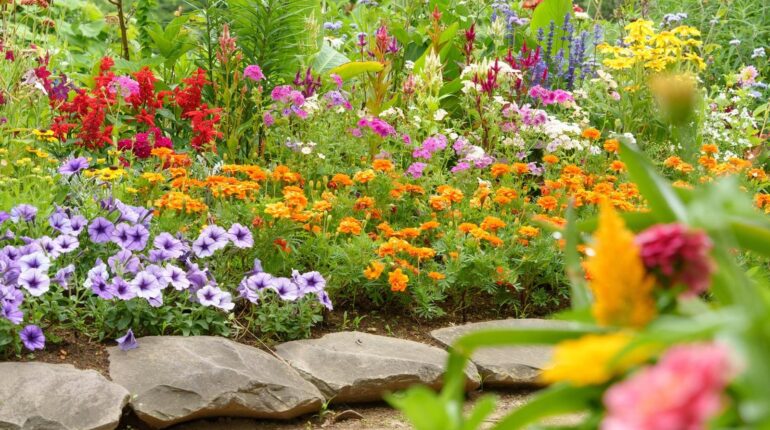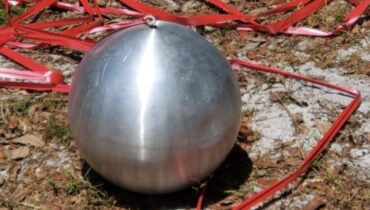📌 The Genius Perennial That Secretly Plants Itself While You Sleep

Posted 30 July 2025 by: Admin
Image d’illustration © TopTenPlay EN
The Perfect Self-Seeding Solution For Busy Gardeners
Every gardener knows the frustration: beautiful annuals bloom magnificently for one season, then vanish completely, leaving empty patches that demand yearly replanting. The cycle never ends—purchasing new plants, preparing soil, starting over from scratch. But what if there was a perennial that could solve this problem while maintaining garden elegance?
Enter the balloon flower (Platycodon grandiflorus), a remarkable self-seeding perennial that transforms garden maintenance from annual chore to long-term investment. Unlike sterile annuals that leave gardeners perpetually replanting, this intelligent plant naturally disperses its own seeds, ensuring continuous coverage without human intervention.
The balloon flower’s self-seeding prowess comes with a crucial advantage: it’s not weedy or invasive. While many self-propagating plants quickly overwhelm garden spaces, balloon flowers respect boundaries. They fill empty spots methodically, never aggressively, creating natural garden expansion that feels organic rather than chaotic.
This strategic approach to garden filling means fewer gaps, less maintenance, and more blooming seasons with minimal effort. Within just a few years, what begins as scattered plantings evolves into a self-sustaining flower community that regenerates annually.
For gardeners seeking beautiful, low-maintenance solutions, balloon flowers represent the perfect balance: the reliability of perennials combined with the space-filling benefits of natural propagation, all without the invasive tendencies that make other self-seeding plants problematic garden choices.
Image d’illustration © TopTenPlay EN
Understanding The Balloon Flower’s Unique Growing Character
This balanced approach to garden enhancement comes with one essential requirement: patience. Unlike instant-gratification annuals that bloom immediately, balloon flowers demand a different gardening mindset—one that values long-term rewards over immediate results.
During their first year or two, balloon flowers focus entirely on establishing robust root systems rather than spectacular displays. This establishment period can test even experienced gardeners’ patience, as plants may appear modest, even underwhelming. But this seemingly slow start serves a crucial purpose: building the foundation for decades of reliable blooming.
The wait proves worthwhile when those first distinctive buds finally appear. True to their name, balloon flowers develop inflated, balloon-like buds that create anticipation in any garden. These unique formations gradually swell before dramatically opening into perfect five-pointed star blooms—a transformation that never fails to captivate observers.
Native to the harsh climates of Russia and Northeast Asia, balloon flowers possess an inherent resilience that many garden-center perennials lack. This geographic heritage explains their patient growing strategy: in challenging environments, slow establishment means survival.
Despite their ability to self-propagate, balloon flowers maintain impeccable garden manners. Their non-aggressive spreading means they’ll naturally fill available spaces without overwhelming neighboring plants—a rare combination of productivity and restraint that makes them ideal for mixed perennial borders.
Understanding this unique character helps gardeners set appropriate expectations and appreciate the balloon flower’s distinctive approach to garden contribution.
Image d’illustration © TopTenPlay EN
Essential Growing Conditions And Care Requirements
This geographic heritage from harsh Russian and Northeast Asian climates reveals crucial insights about balloon flowers’ environmental preferences. Successfully cultivating these resilient perennials requires understanding their specific needs—requirements that mirror their native habitats.
Balloon flowers demonstrate remarkable hardiness, thriving consistently across USDA Zones 3 through 8. This impressive range makes them suitable for gardens from Minnesota’s frigid winters to Georgia’s humid summers, though their success depends entirely on meeting one non-negotiable requirement: impeccable drainage.
Well-draining soil represents the absolute foundation of balloon flower cultivation. These perennials possess an almost paradoxical relationship with moisture—they require consistent hydration yet become fatally vulnerable in waterlogged conditions. Root rot develops rapidly in soggy soil, transforming promising plants into disappointing casualties.
The ideal growing environment combines full to partial sun exposure with soil that sheds excess water efficiently. Clay-heavy or consistently damp locations spell disaster for these otherwise hardy perennials, regardless of other favorable conditions.
Strategic care practices maximize their self-seeding potential. Rather than deadheading every spent bloom, gardeners should resist this common maintenance impulse. Allowing select flowers to complete their seed cycle ensures natural propagation while maintaining garden aesthetics—simply deadhead the most visible blooms while permitting others to mature.
For those preferring greater control over plant placement, collecting mature seeds offers an alternative approach. Starting seeds indoors provides precise positioning opportunities while maintaining the species’ natural reproductive cycle, creating the perfect balance between garden planning and natural processes.
Image d’illustration © TopTenPlay EN
Varieties And Long-Term Garden Management
These precise positioning opportunities become even more critical when considering balloon flowers’ diverse cultivar options and unique maintenance requirements. Unlike traditional perennials that adapt to relocation, balloon flowers demand permanent placement decisions from their initial installation.
The species offers remarkable aesthetic versatility through its color spectrum spanning blue, pink, white, and purple shades. Each cultivar maintains the characteristic balloon-shaped buds and star-like blooms while providing distinct visual impact—from deep royal blues reminiscent of summer twilight to pristine whites that illuminate evening gardens.
Height variation proves equally impressive, with cultivars ranging from compact specimens under 1 foot to towering varieties reaching 3 feet. This dramatic size difference allows strategic garden layering, though taller selections require essential support systems. Staking prevents the disappointment of collapsed stems during peak blooming periods when flower weight challenges structural integrity.
The species presents one crucial management principle that separates balloon flowers from conventional perennials: permanent establishment philosophy. Unlike hostas, daylilies, or other garden staples that benefit from periodic division, balloon flowers resist disturbance once established. Their taproots develop extensive underground networks that suffer severe trauma when moved or divided.
This characteristic transforms garden planning into a long-term strategic exercise. Initial placement decisions become permanent commitments, making careful site selection absolutely essential. The reward for this thoughtful approach manifests in decades of reliable self-seeding performance, creating naturalized colonies that expand gradually without aggressive spreading behavior.
Spring emergence delays further emphasize their patient nature, often appearing weeks after other perennials have broken dormancy.


















